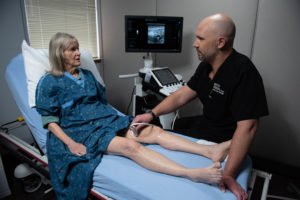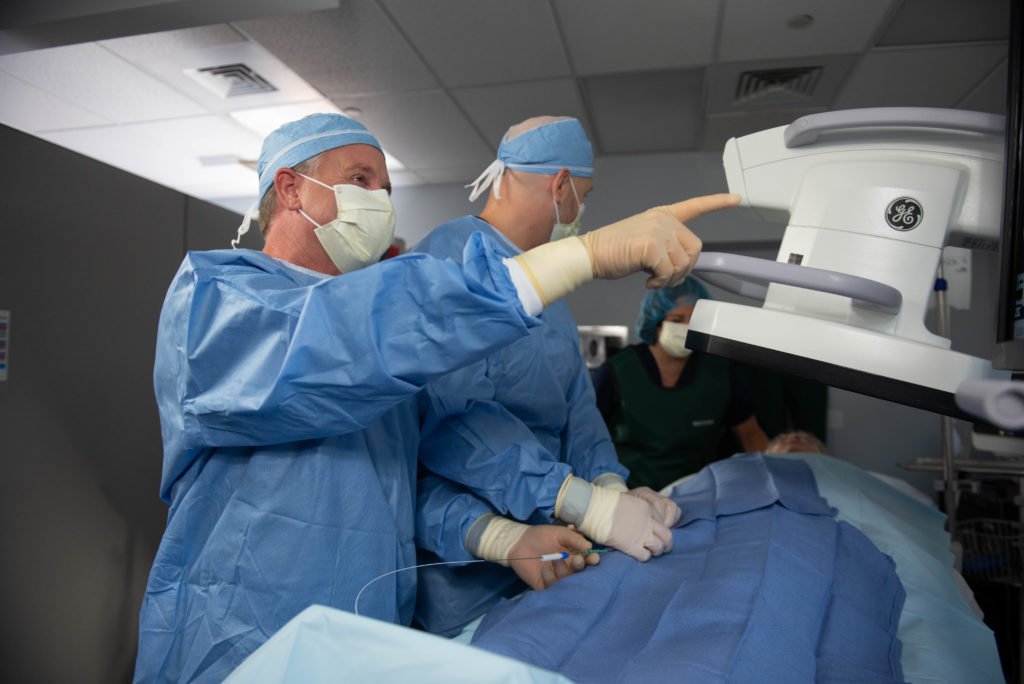At its most basic level, interventional radiology is medicine that uses image-guidance to help treat various diseases and syndromes without the patient ever having to go under a scalpel. Through the use of tools like x-ray, ultrasound and very thin needles. Interventional radiologists, or endovascular specialists like Dr. Kovaleski perform minimally invasive procedures that help people get back to their lives quickly and safely.
Since the field of interventional radiology is expanding so quickly and is relatively young, there’s a lot to explore and absorb when it comes to treatment goals, patient benefits and terminology. Below are five answers to common questions about the world of interventional radiology and what they mean for patients.
Who is an interventional radiologist?
An interventional radiologist is someone who has attended and completed four years of medical school, followed by a residency in radiology and a fellowship in minimally invasive, image-guided procedures. To learn more about what Dr. Kovaelski did to prepare for his career click here.
How do these minimally invasive procedures work?
The kind of procedure performed depends entirely on the health goals of the patient. However, generally speaking, the goal in treatment is either to revascularize arteries or veins to allow better blood circulation (like PAD, Venous Issues), to limit blood flow to an area using embolization (like UFE, PAE), or to remove the blockage or open arteries by inserting a stent or other devices designed to open blood flow to areas where there is disease or damage to the veins or arteries. For a complete list of procedures and their logistics, click here.
What are the benefits of interventional radiology?
Patient benefits include no need for general anesthesia, hospital stays or open surgery. These key factors lead to lower risks of infection, virtually no blood loss and a quicker than average recovery time with few side effects.
How is interventional radiology used in cancer treatment?
There are four pillars of cancer treatment – chemotherapy, radiation, surgery, and non-surgical intervention. In combination with a patient’s oncologist, endovascular specialists can provide a variety of adjunctive cancer treatments to improve patient outcomes. To find our more about how ECCO can help, click here.
What is the difference between an interventional radiologist and an endovascular specialist?
There really isn’t one! At ECCO, we consider our physicians to be endovascular specialists. They have spent years training to become some of the best in this highly specific field. Their skills and expertise at image-guided therapies and procedures makes them specialists and experts at all of the services ECCO provides.




